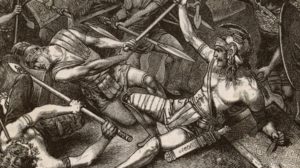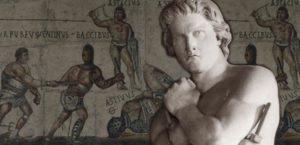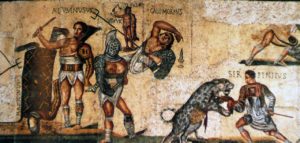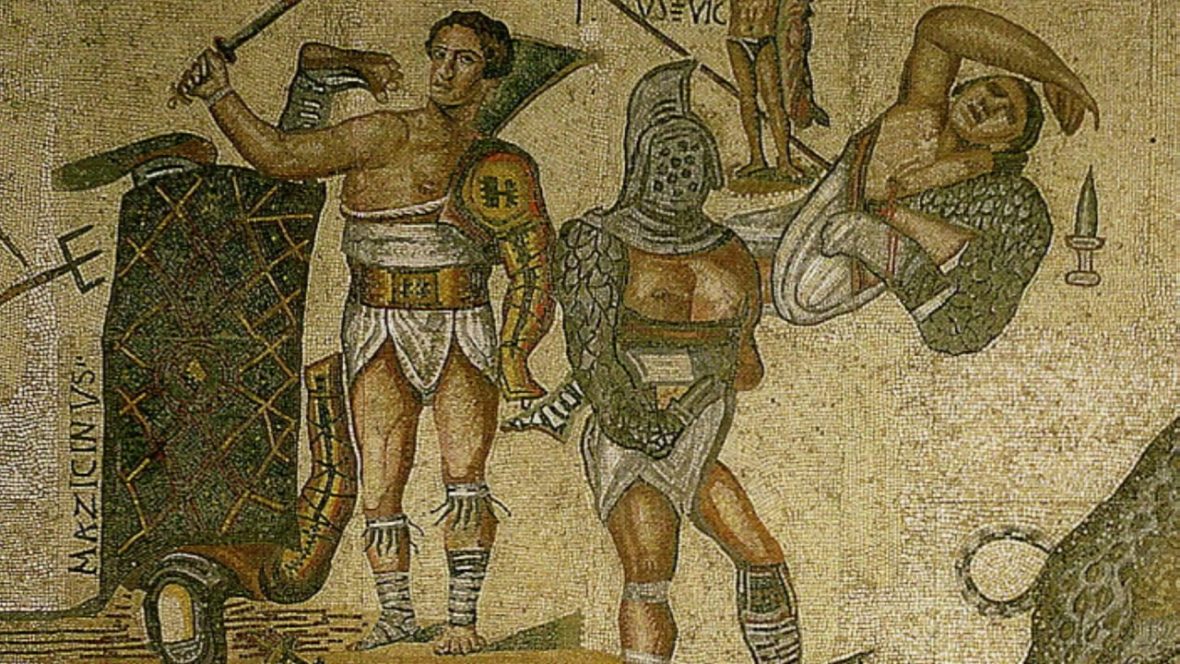Spartacus was a Thracian gladiator who, along with the Gauls Crixus, Gannicus, Castus and Oenomaus, was one of the escaped slave leaders in the Third Servile War, a major slave uprising against the Roman Republic. Take a look below for 30 more fascinating and interesting facts about Spartacus.
1. Little is known about Spartacus beyond the events of the war, and surviving historical accounts are sometimes contradictory and may not always be reliable.
2. All historical sources agree that he was a former gladiator and an accomplished military leader.
3. The Greek essayist Plutarch describes Spartacus as, “a Thracian of Nomadic stock,” in a possible reference to the Maedi tribe.
4. Appian says he was, “a Thracian by birth, who had once served as a soldier with the Romans, but had since been a prisoner and sold for a gladiator.”
5. Florus described him as one, “who, from a Thracian mercenary, had become a Roman soldier, that had deserted and became enslaved, and afterward, from consideration of his strength, a gladiator.”

6. Plutarch also writes that Spartacus’ wife, a prophetess of the Maedi tribe, was enslaved with him.
7. According to Appian, a Roman historian but Greek by birth, Spartacus was born in Thrace but once served as a soldier of Rome. He was later sold into slavery, from where he was sold into a gladiator school.
8. In 73 BCE, Spartacus along with 70 other slaves receiving gladiator training plotted an escape from captivity. They grabbed some kitchen utensils and fought the Iudus guards.
9. During their escape, Spartacus and some other slaves managed to capture a wagon that was full of weapons and armor meant for gladiators. Though the weapons weren’t military issue, the escaped slaves managed to use the weapons to defeat a small force that was trying to capture them.
10. Spartacus was initially a member of the Roman Army. However, he didn’t like not being able to have control of his own life, so he fled the army in order to be a free man.
11. Some historians argue that Spartacus was actually a Roman auxiliary officer before escaping, which would mean that he originally volunteered for service.

12. After going AWOL, Spartacus was captured and forced into slavery as punishment for his desertion.
13. Spartacus was purchased by a man named Lentulus Batiatus, who was the one that enrolled him in the gladiator school in Capua, which Batiatus just so happened to own.
14. As a gladiator, Spartacus was trained in the role of a “murmillo,” a heavyweight gladiator.
15. Murmillos fought with a broadsword up to 18 inches in length, and used a large shield called a scutum in defense. They also fought bare chested and barefooted.
16. When Spartacus and the other slaves escaped, they traveled south, fighting to free other slaves and recruiting them to their side.
17. Accounts say that three men were chosen as leaders of the rebelling slaves: Spartacus, Crixus and Oenomaus.
18. Originally comprised of only 70 escapees, the rebellion army population quickly skyrocketed to over 65,000 men. Some estimates even put the number at around 125,000 men.
19. While the escapee forces were originally comprised mostly of ex-slaves, Spartacus also allowed many of the shepherds and herdsmen of the area to join his army.
20. Spartacus wasn’t the first slave to rebel, and his slave army wasn’t the first that Rome attempted to put down. The First and Second Servile War both took place in Sicily, with the second resulting in a four year fight between the slaves and Rome. However, Spartacus’ rebel army was bigger and more organized than the groups in previous wars.

21. Spartacus’ revolt led to a fear of slaves. This fear spread throughout Rome, as the first two Servile Wars had already taken their toll on the population.
22. Under Spartacus’ leadership, the rebel army was able to defeat nine separate Roman armies during the war by causing chaos in the countryside and aggressively attacking the Roman armies who underestimated the slaves’ capacity and capabilities.
23. Part of the reason why Spartacus was so successful in fighting the Roman armies was because Rome was already engaged in two other wars at the same time.
24. During the war, Spartacus and his right hand man, Crixus, split up. Some believe that it was a strategic plan by the leader, and some believe that Crixus wanted to pillage the Roman countryside on their way to Rome.
25. After splitting up, Crixus and his followers were attacked and defeated by the Roman army. Upon hearing of Crixus’ death, Spartacus took revenge by executing 300 of his Roman captives.

26. Before he sacrificed the Romans, Spartacus held a mock gladiator game, pitting the Roman soldiers against each other in a fight to the death.
27. After their escape from the gladiator school, Spartacus’ wife woke up one morning and saw Spartacus sleeping with a serpent wrapped up around his head. She perceived this as a sign of, “a tremendous and fearsome power that would bring him to an unfortunate end.”
28. Before the final battle of the war, the Battle of the Silarus River, Spartacus made a bold move to rile up his troops. He brought his horse before his men and killed it, declaring that if they won the battle, he would have new horses to choose from, but if they lost, he wouldn’t need one.
29. Spartacus died on the battlefield at the banks of the Silarus river. However, some sources say that his body was never recovered.
30. Spartacus’ objectives for inciting the war are debated. Nothing that he did suggested that he was looking to abolish slavery and most historians seem to think that he just got caught up in plundering during his escape.




